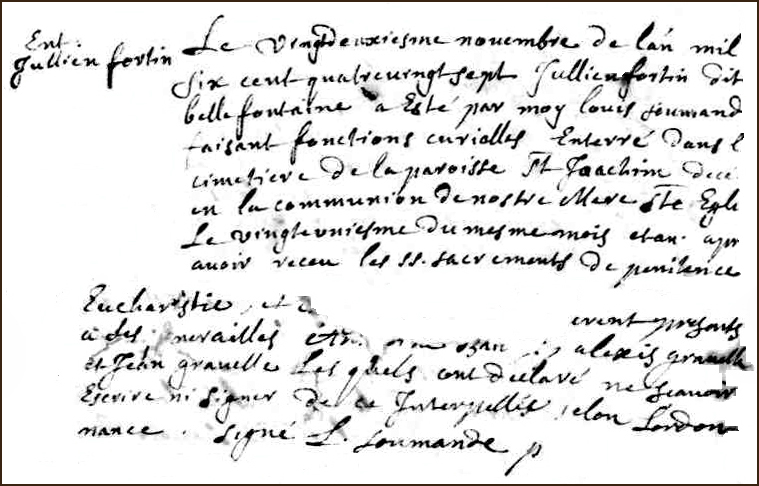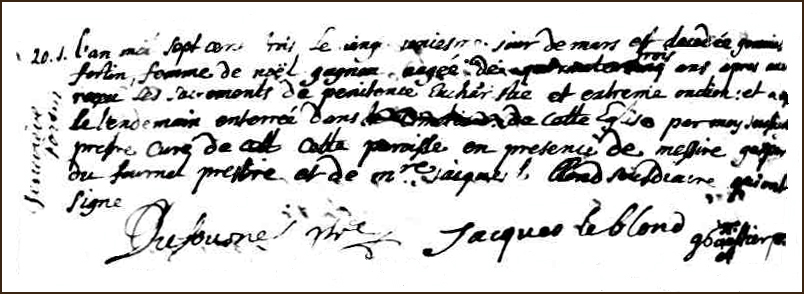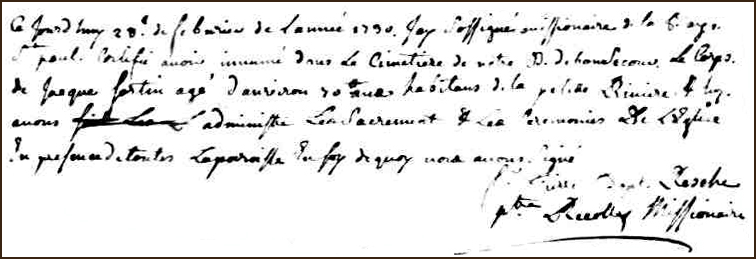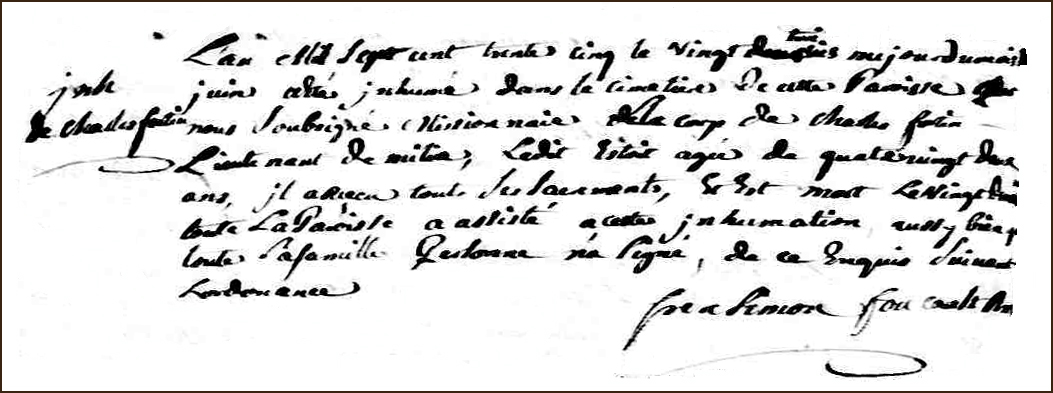Between 12 Nov 1669 and 18 Nov 1669, Pierre Gagnon and Barbe Fortin were married in the parish of La Visitation de Notre Dame du Chí¢teau Richer, Chí¢teau Richer, Canada, New France.
The Marriage Record of Pierre Gagnon and Barbe Fortin – 1669
SOURCE: Gabriel Drouin, comp. Drouin Collection. Montréal, Québec, Canada : Institut Généalogique Drouin. Notre Dame de la Visitation, Chí¢teau Richer, Canada, New France, 1669. Marriage Record of Pierre Gagnon and Barbe Fortin, page 32.
Click on the image above to enlarge it. Click on the link for a PDF copy of the Marriage Record of Pierre Gagnon and Barbe Fortin. The record reads:
M[arriage] 62
Pierre Gagnon and Barbe FortinIn the year of O[ur] L[ord] J[esus] Ch[rist] one thousand six hundred sixty-nine, Mister deCaumont, missionary priest, published the bans and not finding any impediment married Pierre Gagnon and Barbe Fortin, living in Cap Tourmente, and in the presence of Jean Gagnon and í‰tienne Racine, Joseph Gravelle, and Jacques Gamache.
                       F. Fillon, Missionary Priest
This record can be found as image 477/727 in the Quebec Vital and Church Records (Drouin Collection), 1621-1967 on Ancestry.com in the records for Chí¢teau Richer (1661-1702). The record which seems to be a transcription made many years after the event, appears on page 32.
The number and letter that precede the names indicate that the event was a marriage, and that marriage was the 62nd in Chí¢teau Richer for the year 1699.
This record does not state the exact date of the marriage but, based on the dates of the preceding marriage and the subsequent marriage, one can deduce that this marriage occurred between 12 Nov 1669 and 19 Nov 1669.
Two priests are named in this record. Father DeCaumont performed the marriage and Father Fillon recorded the event in the register.
Copyright © 2008 by Stephen J. Danko













